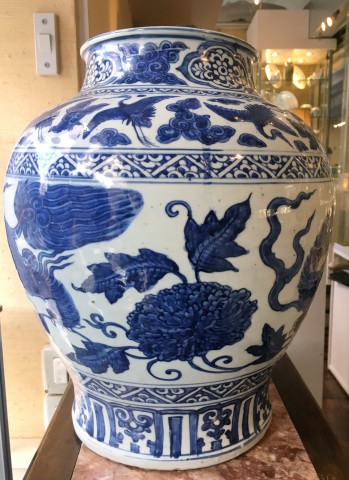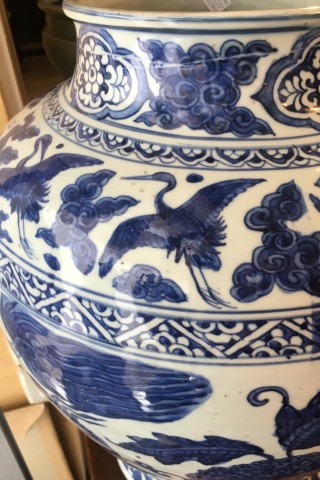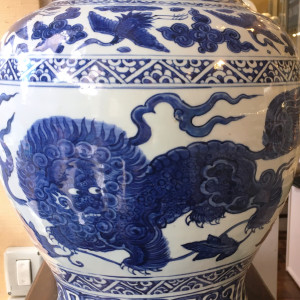BE56
Further images
Of shouldered baluster form, rising from a waisted foot to a short inverted neck, boldly painted in vibrant shades of underglaze blue; a rare continuous design around the centre of two fearsome Fo lions with wild manes, bushy tails and sharp claws, divided by large peony blooms, while leafy tendrils twine around the lions and clouds curl overhead, all set between two bands of triangle diaper pattern, the shoulder dynamically painted with eight cranes swooping among clouds, the neck with further cloud motifs, a pattern of lappets alternating with fleur-de-lys around the foot; the base unglazed.
Literature
A jar of similar form and decoration, except the Fo lions are in cartouches, can be found in the Topkapi Saray Museum, attributed late 16th / early 17th century (museum number TKS 15/2581).
The Fo lion (or Dog of Fo) is an emblem of valour and energy, and are often found in pairs guarding important buildings. They are sacred to Buddhism: Manjusri, the Bodhisattva of Wisdom, is depicted riding a Fo lion to represent the use of wisdom to tame the mind.
The crane is a symbol of longevity, as it has a long life span and white feathers which are associated with old age. It is also the vehicle of the Daoist Immortals between heaven and Earth.






